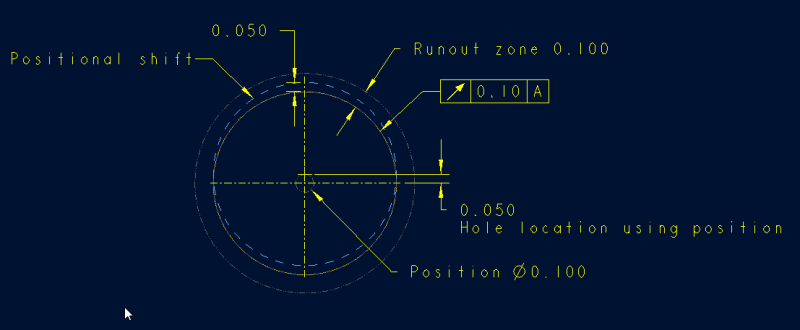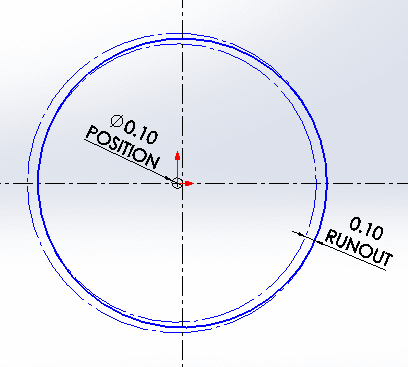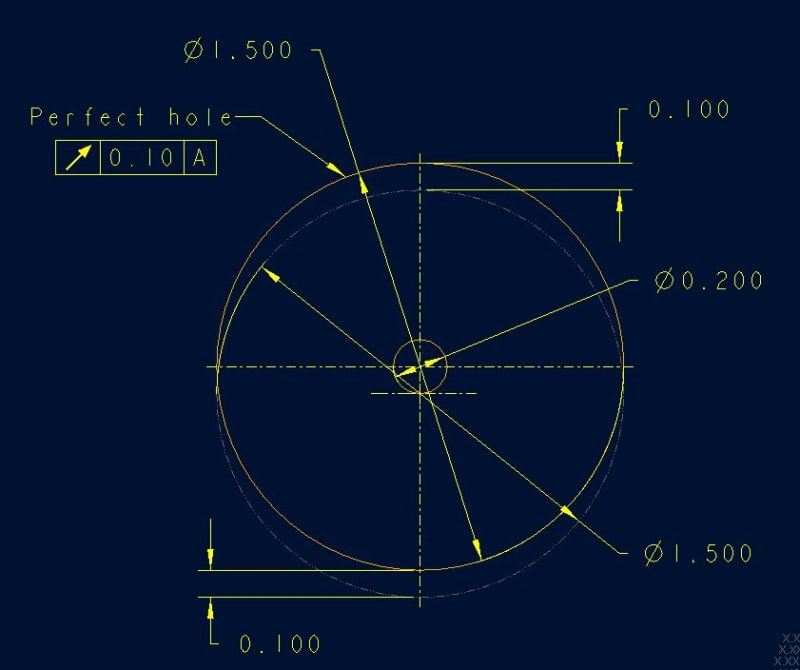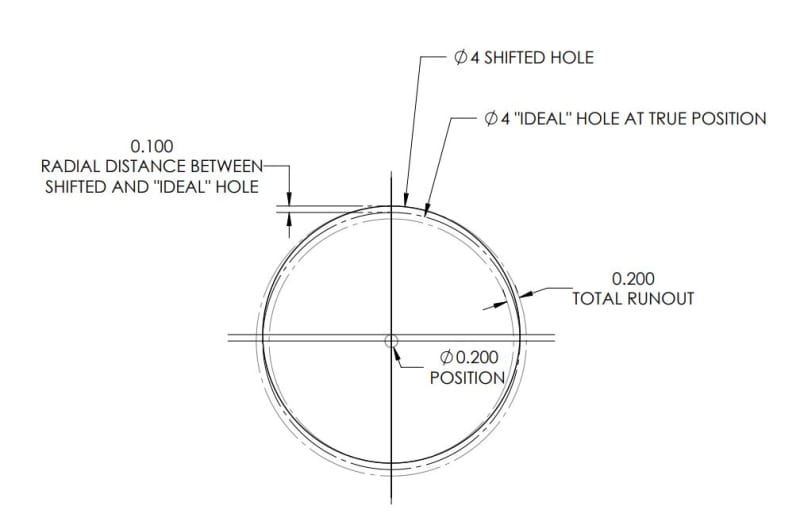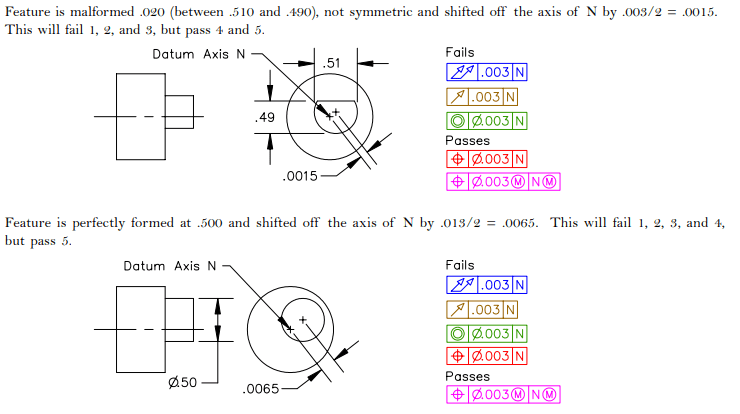Hi all,
I need some help clarifying position vs runout.
We have a drawing that has a hole in a round part. We call out |RUNOUT|0.010|A| where A is the outside centerline.
I want to convert runout to position (position is directional and runout is not), so therefore; it will look like: |position|Ø0.020|A|.
Now the rub, I believe this is the same thing.
When performing a tolerance stack, all of the runout value is used (i.e. 0.010 in this case), because it is the total indicator and the "zone" can move the full value.
Where position is only 1/2 the value (0.010 in this case).
i.e. radial distance from perfect.
Am I wrong, I need some kind of "documented proof" to provide to my co-worked, or something set me right and correct my error.
Help anyone?
-Paul
I need some help clarifying position vs runout.
We have a drawing that has a hole in a round part. We call out |RUNOUT|0.010|A| where A is the outside centerline.
I want to convert runout to position (position is directional and runout is not), so therefore; it will look like: |position|Ø0.020|A|.
Now the rub, I believe this is the same thing.
When performing a tolerance stack, all of the runout value is used (i.e. 0.010 in this case), because it is the total indicator and the "zone" can move the full value.
Where position is only 1/2 the value (0.010 in this case).
i.e. radial distance from perfect.
Am I wrong, I need some kind of "documented proof" to provide to my co-worked, or something set me right and correct my error.
Help anyone?
-Paul

